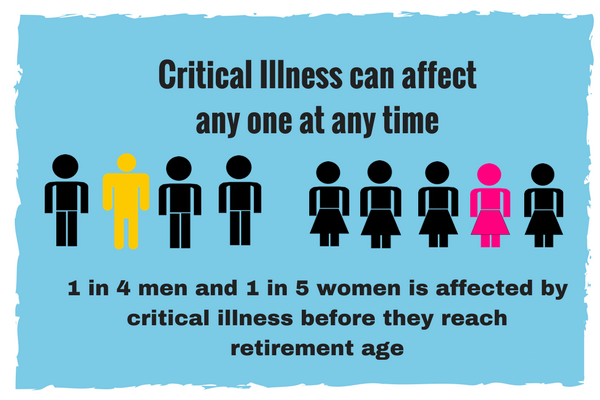Null Hypothesis Quick Introduction
Contents
The null hypothesis statement is represented as H0 and the alternate hypothesis is represented as Ha. The average annual returns for the five-year period are 7.5%; the null hypothesis is rejected. The null hypothesis states that there is no relationship between two population parameters, i.e., an independent variable and a dependent variable.
A core work of the neo-Darwinian modern evolutionary synthesis, it helped define population genetics, which Fisher founded alongside Sewall Wright and J. B. S. Haldane, and revived Darwin’s neglected idea of sexual selection. The null-hypothesis signifies the possibility of observations being caused by chance or random factors. In contrast, the alternate hypothesis highlights that the observations were caused by specific reasons.

Perhaps getting insufficient sleep actually decreases the risk of a heart attack among men over age 50. Because we have tested H0, we have more information that we would not have if we had neglected it. His famous book, Statistical Methods for Research Workers is often likened to Isaac Newton’s Principia in physics. For all of these accomplishments, it’s not shocking that he was knighted by Queen Elizabeth in 1952.
Additionally, the null hypothesis protects against Type I errors, which can be very costly. A null hypothesis is a statement that there is no difference between two groups or that there is no association between two variables. In other words, the null hypothesis assumes that any observed differences are due to chance. In 1918, while researching for his paper on quantitative genetics, he introduced the concept of variance, which basically measures the spread of the data being collected from the average value. In 1919, while working at the Rothamsted Experimental Station, he invented the tools for modern experimental design with the help of data available there.
They are not easily accepted by many analytical chemists, because they have different meaning in ordinary analytical chemistry. Moreover, sometimes, people use the same words in classification and prediction, where Correct I decision is “a sample belonging to a class is classified correctly in its own class”. Therefore, generally, one should use the words classification sensitivity, …, class-modeling specificity. In the following, sensitivity and specificity indicate class-modeling sensitivity and class-modeling specificity.
Statistical Methods and Error Handling
Lifelong poor eyesight caused his rejection by the British Army for World War I, but also developed his ability to visualize problems in geometrical terms, not in writing mathematical solutions, or proofs. He entered Harrow School age 14 and won the school’s Neeld Medal in mathematics. In 1909, he won a scholarship to study Mathematics at Gonville and Caius College, Cambridge. In 1915 he published a paper The evolution of sexual preference on sexual selection and mate choice. Standard DeviationStandard deviation is a popular statistical tool represented by the Greek letter ‘σ’ to measure the variation or dispersion of a set of data values relative to its mean , thus interpreting the data’s reliability. For this first find the difference between claimed data and the actual data and then divide it by claimed data.

If the obtained p-value is smaller than the level of significance, then an alternative hypothesis is accepted. The null hypothesis states that there is no significant difference between the two samples, and the alternate hypothesis states that there is a significant difference between the two samples. The null hypothesis is referred using Ho and the alternate hypothesis is referred using Ha. As per null hypothesis the observed variables and parameters are the same across the samples, but as per alternate hypothesis there is a significant difference between the observed variables and parameters across the samples. For an analyst who makes predictions, hypothesis testing is a rigorous way of backing up his prediction with statistical analysis. It also helps determine sufficient statistical evidence that favors a certain hypothesis about the population parameter.
Reappraisal of his contentious views on race and eugenics
In fact, it is often one of the first steps toward further inquiry. If it turns out that the average annual return of the last 5 years is 7.5%, then the null hypothesis is rejected. Null hypothesis is used in statistics and it states if there is any significant difference between the two samples. The acceptance of null hypothesis mean that there is no significant difference between the two samples. And the rejection of null hypothesis means that the two samples are different, and we need to accept the alternate hypothesis.
A significance test is used to determine the likelihood that the results supporting the null hypothesis are not due to chance. Keep in mind, even if the confidence level is high, there is still a small chance the null hypothesis is not true, perhaps because the experimenter did not account for a critical factor or because of chance. A null hypothesis is used in hypothesis testing, or the testing of predictions about a particular outcome. Hypothesis testing works by collecting data and measuring how likely the particular set of data is when the study is on a randomly selected representative sample.
You are unable to access statisticsbyjim.com
The tests are core elements of statistical inference, heavily used in the interpretation of scientific experimental data, to separate scientific claims from statistical noise. The null-hypothesis is accepted when the sample value is equal to or almost identical to the population data. In such a case, the statistical significance falls within the given cut-off confidence interval. Conversely, if the sample https://1investing.in/ data is not equal to the population data or if the statistical significance level is below the confidence interval, the hypothesis is rejected. There are considered to be two methods for null hypothesis testing. The first is the significance testing approach, in which the null hypothesis is rejected if the resulting data is significantly unlikely to have occurred if the null hypothesis were true.
The null hypothesis is useful because it can be tested and found to be false, which then implies that there is a relationship between the observed data. It may be easier to think of it as a nullifiable hypothesis or one that the researcher seeks to nullify. The null hypothesis is also known as the H0, or no-difference hypothesis. To distinguish it from other hypotheses, the null hypothesis is written as H0(which is read as “H-nought,” “H-null,” or “H-zero”).
Rejecting the null hypothesis when it is true is called a Type I error, and failing to reject the null hypothesis when it is false is called a Type II error. Fourth, and perhaps most importantly, the null hypothesis protects against Type I errors. A Type I error is who is known as the father of null hypothesis when we reject the null hypothesis when it is actually true. This error can lead to false positive results, which can be very costly and cause a lot of harm. Second, the null hypothesis allows us to set up a statistical model that can be used to make predictions.
- Joan Box, Fisher’s biographer and daughter, says that Fisher had resolved this problem already in 1911.
- Because the hypothesis test provides sufficient evidence to check the credibility of the given data.
- The two important errors observed in hypothesis testing is as follows.
- He entered Harrow School age 14 and won the school’s Neeld Medal in mathematics.
- One example is that a doctor states that a human being takes five days on average to recover from viral fever.
- It is a common practice to use a one-tailed hypothesis by default.
In genetics, his work used mathematics to combine Mendelian genetics and natural selection; this contributed to the revival of Darwinism in the early 20th-century revision of the theory of evolution known as the modern synthesis. For his contributions to biology, Fisher has been called “the greatest of Darwin’s successors”. A hypothesis is tested for significance levels level in the observed data.
While they may seem less appealing to publishers, they can tell the scientific community important information about correlations that do or do not exist. In this way, they can drive science forward and prevent the wastage of resources. The null hypothesis is not the same as an alternative hypothesis.
Comparing Gaussian and Gamma Distribution Fits Using the χ2 Test
For example, trace metals have been found useful to detect the origin of an animal or vegetal food. However, the abundance of trace metals in the soil can depend very much on the nonuniformity of lithology and on manuring. So anomalies, which are also important, in these elements cannot be used to decide that the sample must be rejected by the model.
Sir Ronald Fisher Background
In inferential statistics, the null hypothesis is that two possibilities are the same. The null hypothesis is that the observed difference is due to chance alone. Using statistical tests, it is possible to calculate the likelihood that the null hypothesis is true. The null-hypothesis validates sample data being equivalent to the population data.
